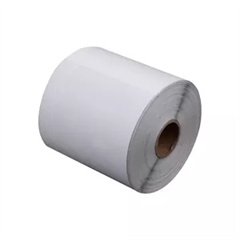1. The uniformity and strength of the thickness of the bottom paper and the surface material are not only related to the printing performance, but also an important indicator that determines the uniformity of die-cutting, the speed of the waste discharge, and the edge breakage of the paper. If these indexes are too low, the label machine cannot produce at high speed.
2. The uniformity of the adhesive and silicone oil coating and the correct coating amount affect the peeling force (release force) between the sticker printing and the bottom paper, and the peeling force directly affects the die-cutting and waste discharge. The speed of the machine and the peeling force also determine the labeling status, that is, the application situation. In addition, the amount of glue applied will also affect the glue penetration of the end surface of the material. Therefore, when buying self-adhesive sticker printing materials, you must carefully check and choose those materials that have the right amount of glue and silicon.
3. The surface gloss and color consistency and density uniformity of the surface material determine the uniformity of ink absorption of the adhesive material and also determine the color difference of the same batch of label printing products. The coating strength of the surface material determines whether a large amount of paper powder will be produced during printing, and it is also an important index that determines the printing quality.
4. The flatness of the material or the uniformity of the rewind tension. Whether it is single-sheet printing or reel printing, the flatness of the material determines whether the paper can be fed, run, registered, and taken correctly during printing. For the roll material, the rewinding tension will play an important role in the flatness of the end surface of the roll material, whether there is glue leakage, and whether it can be correctly registered.








